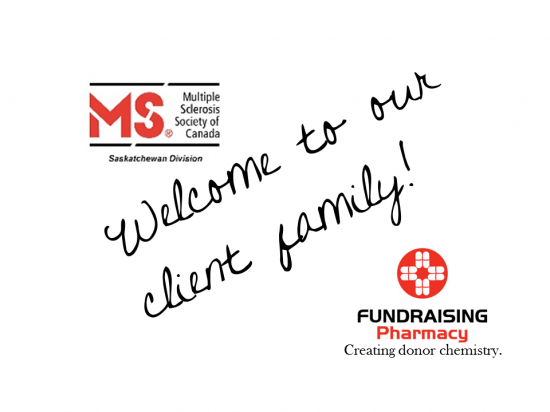an OTG guest post by Sheena Greer
Ever read something and think “was this written by aliens? Or robots? Or robot aliens?”
I feel this way a lot.
Especially when I comb over fundraising appeals that arrive in my mailbox. Certainly, I’m more critical than your average person, but my guess is that if an appeal fills me with disappointment, it’s having a much more devastating effect on the broader audience.
Apathy.
Apathy is the social sector’s biggest enemy. There are many reasons why people are apathetic, but the root cause is very fixable.
In his TedTalk “Redefining Apathy”, Dave Meslin suggests that people want to do great things, but we live in a world that actively discourages engagement.
How so? Poor communication. On purpose. Or accidentally.
Instead of engaging humans in their own language, we engage them with the language of a machine.
Organisations are machines. Not unlike robots.
I hope your organisation is a well-oiled machine (as opposed to a rusted-out old boat.) Imagine this. Your board is fantastic. Your ED is superb. Your staff is delivering the best possible programs to the community you serve. And the community is way better for it.
Wonderful!
The only problem? You’re severely under-funded.
The machine needs fuel. It needs the hearts and minds (and dollars!) of humans to keep it moving.
“Our programs are so awesome! Why aren’t people giving?” This is something I hear quite a bit from people working on the front lines. “Our mission so important…our work is improving and saving lives!”
The problem is that the language we use when speaking with donors and others in the community is far too similar to the language we use internally. The effect of this ‘loss in translation’? Apathy.
So how do we write for humans? It isn’t too hard, but there are some basic concepts you need to keep in mind.
1) Know your audience. And “general public” isn’t an acceptable answer. There are individuals in the world who are going to care deeply about your cause, and there are individuals who simply won’t.
You need to get to know the former and cut your losses on the latter.
We often view “preaching to the choir” as negative. But the choir is your audience, along with the parishioners, and even people straggling in the foyer. These iare the people you need to focus on activating and keeping activated. The passersby on the street likely won’t be converting anytime soon.
2) Kill the royal we. One of the biggest mistakes an organisation can make is to talk too much about itself. And too much is usually a lot less than many of us think. So, how do you inform and show impact without doing this?
Make it about the royal you. Tell donors that the wonderful things you are accomplishing is all because of them. You will connect to their hearts. Invite them to share their dreams for change. They will commit to make them come true.
“Because of you, Samantha was able to finish school.”
“You can imagine how incredible it feels to be told you are cancer-free.”
“You made all of this possible.”
3) Use plain language. Plain language isn’t “dumbing things down.” It communicates your message in a simple and powerful way.
No jargon. No rambling. No bullshit.
“It has come to the attention of management that an excess in ultra contemporary diminutive humanoid garments for lower body extremities has unfortunately resulted in increased pressure to downsize due to inadequate performance.”
No!
Plain language gets to the point and, as my old creative writing prof used to say, “goes for the jugular!”
“For Sale: Baby Shoes, Never Worn.”
4) Don’t be afraid of emotion. Embrace it and don’t let it go! The work we’re doing is emotional! We see the darkest parts of humanity. We also witness miracles.
It isn’t just about joy and pain. What about humour? Curiosity? Surprise? Sorrow? Frustration? Courage?
Go ahead. Stir up emotions in your audience. Humans feel. And when humans feel deeply, change is made.
5) Ask and be clear. All too often, we can forget to include a call to action. We can’t be afraid to ask people directly for what we want – whether it’s a fundraising appeal asking for dollars or a Facebook post requesting volunteers for an event. Using vague statements like “we need your support” is meaningless.
6) Communication is best when it’s one-on-one. We can’t always sit face to face with our donors, but we need to mimic this in our communications. No “Dear friends” or even “Dear Supporter.” No “Sincerely, The entire board of this organisation” signatories.
Think of a wonderful personal letter (or email) you’ve received.
Sheena,
I love you and I’m your number one fan. Your mom and I are so proud of you!
Love ya Beans,
Dad
OR
Dear child,
We appreciate you and your continued efforts towards excellence.
Respectfully,
Management of the Miller Family.
Which note do you think made me tear up when I read it?
7) Tell a story. Humans have evolved to tell stories. We haven’t evolved to comb through statistics and facts and dry, boring reports. Robots LOVE numbers and statistics. So send those to your robot overlords.
Stories are for humans. Their brains are hard-wired for them. Tell your stories to your humans!
8) Say what you need to say – no more, no less. Likely, we could go on and on about our organisations. We think that much of what happens in the day to day of it all is important. And it is – internally.
Here’s a surefire formula for success. Choose your topic well, tell a great story filled with emotion, use plain language and clearly ask for a donation. That’s it, you’re done. Don’t force it. Cramming too much into a 2 page letter, or trying to fill the dead space of a not-quite 4 page letter will end in heartache – for you, and your reader.
This is a first of several guest blog posts from some of our very favourite fundraisers and people-who-work-with fundraisers. Sheena Greer from colludo.ca is an ass-kicking do-gooder and committed charity communications professional. You can reach her directly by email or phone (306-230-1951).
And if you enjoy this post, just imagine how much donor chemistry a colludo/FundraisingPharmacy mashup could create for your charity. Email or call David (toll-free in North America on 1-800-991-3318 x101 or on our New Zealand freephone 0800 995 054) today for free, no obligation advice.



 Does your charity direct donors to call a toll-free or auto-attendant line instead of a real person who can help? Or do you invite donors to email info@charitymeh.com on your Planned Giving webpages? If so, this is what you are really saying to donors desperately trying to connect to a human being at your organization.
Does your charity direct donors to call a toll-free or auto-attendant line instead of a real person who can help? Or do you invite donors to email info@charitymeh.com on your Planned Giving webpages? If so, this is what you are really saying to donors desperately trying to connect to a human being at your organization.

